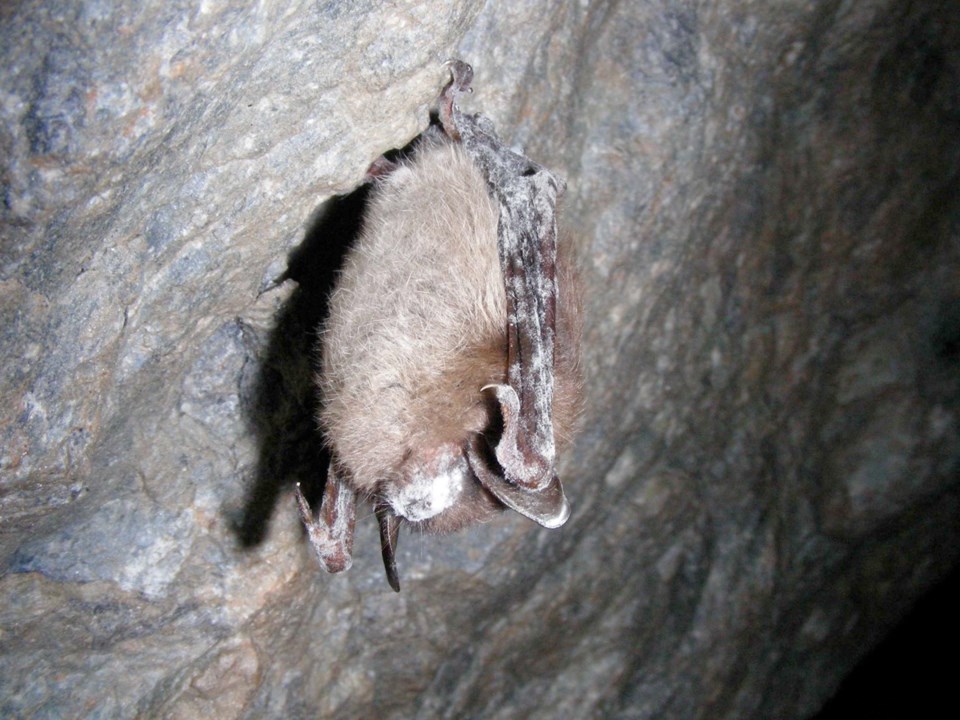B.C. bats are facing a “gut-wrenching” threat to their future that could have serious agricultural and economic repercussions, says the Ministry of Environment’s small mammal specialist.
White nose syndrome, which has killed millions of bats in eastern North America, was confirmed in a brown bat found mid-March near Seattle.
B.C. authorities are operating under the precautionary principle that the syndrome has already spread here, Purnima Govindarajulu said.
Ten dead bats from B.C., about four of them from Vancouver Island, are being tested at the provincial lab for white nose, she said.
Scientists hope the bats don’t have the disease and if they do, the higher level of bat diversity in B.C. will mitigate the dire effects occurring in the East. There, the devastation of insect-eating bats has cut into pest control for agriculture and forestry. Scientists stopped counting after the death of six million bats in eastern North America, Govindarajulu said.
“Given all the research and the records, we expect a fairly rapid and steep decline” in B.C., she said.
There are many unknowns about the disease, which takes hold during winter hibernation and infects the skin of bats’ muzzles, ears, and wings with a white fungus. First identified in North America in 2007, white nose has been spreading “hundreds of kilometres a year” westward, given that bats can fly long distances.
White nose was not forecast to reach the West Coast until as late as 2020 based on bat-to-bat transmission, but the infected bat found 45 kilometres east of Seattle shows how fast it has spread. The U.S. Geological Survey reports the disease is devastating bats in 25 states and five provinces.
White nose originated in Europe and Asia but scientists are not sure whether the North American disease is a virulent strain or something new, Govindarajulu said. There is no treatment for white nose syndrome that can be applied in the wild.
“We expect there will be serious consequences,” Govindarajulu said.
“Again, we don’t know how much, but there have been a few papers published that given the number of harmful insects that bats consume, they benefit the agricultural and forestry industries by billions of dollars. So when bats disappear, again, we’re extrapolating there will be fairly significant ecosystem and economic costs.”
A 2011 study estimated that bats save the U.S. agricultural industry between $3.7 billion and $53 billion a year, according to research by American and South African universities.
B.C. is home to 16 of the 19 bat species in Canada, but it is difficult to estimate their numbers given their mobility and patchy distribution in roost sites.
The province has been counting bats at a few summer roosts for comparison with future counts, Govindarajulu said.
“We’re working on building resilience into bat populations. We’re working on best management practices for other threats; we’re asking people if they have wetlands to look after bat habitat and conserve bat roosts.”
Southern Vancouver Island and the Lower Mainland are called “ground zero” due to their proximity to Seattle, she said.
To keep track of white nose syndrome, the public is asked to report any dead bats found to the B.C. Community Bat Program at 1- 855-9BC-BATS.



